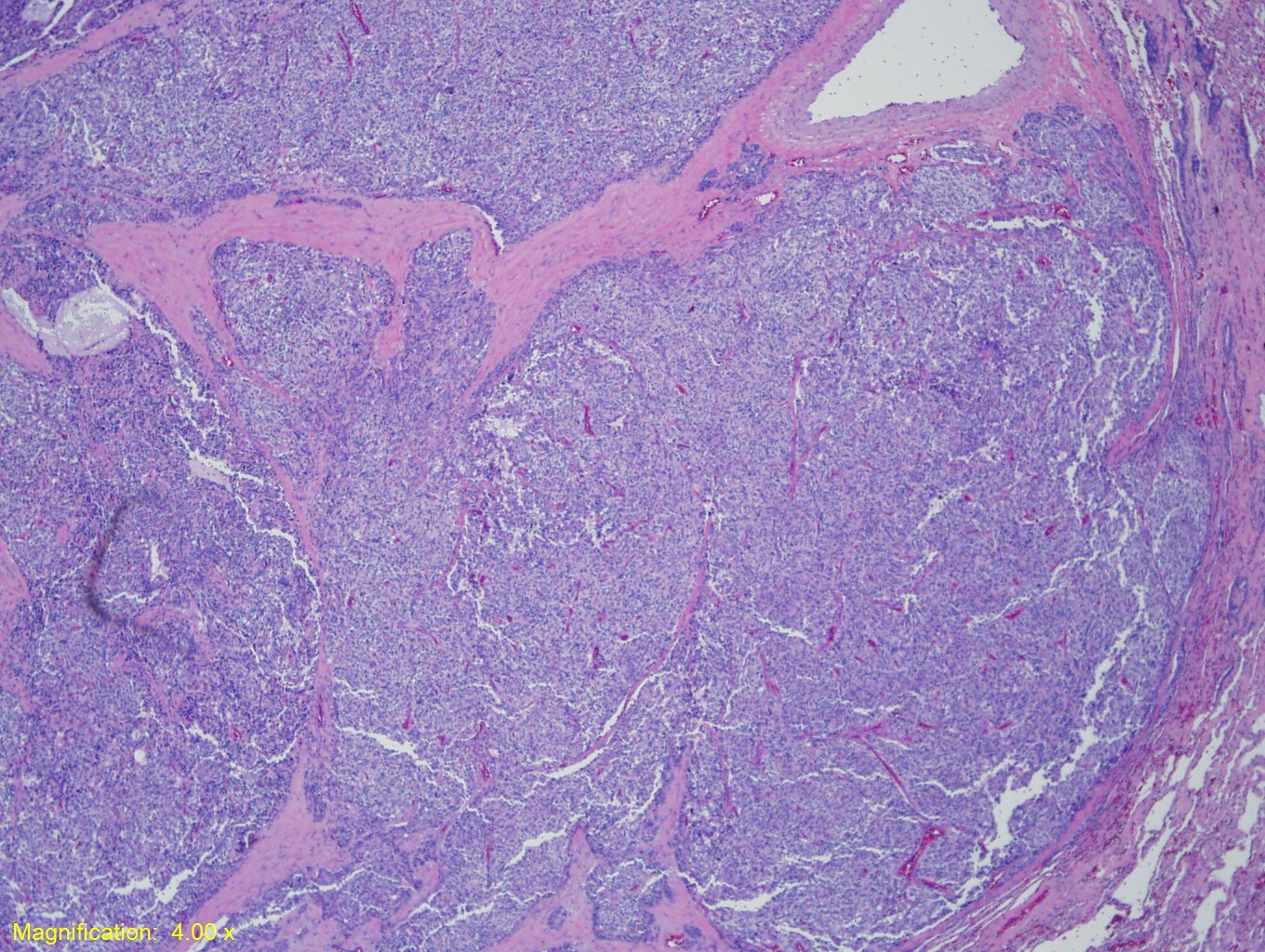System: Lower Respiratory : Lung: Neoplastic: Carcinoid, Spindle Cell Type

System: Lower Respiratory : Lung: Neoplastic: Carcinoid, Spindle Cell Type



4x Image
4x Image
10x Image
10x Image
20x Image
20x Image
40x Image
synapto 10x Image
chromo 10x Image
AE1/AE3 10x Image
Carcinoid tumors are rare tumors of the lung, accounting for approximately 1-2% of all lung tumors. They are believed to arise from Kulchitsky cells, which belong to the family of neuroendocrine cells.
Carcinoid tumors are classified based on their histologic features as typical or atypical. Typical carcinoid tumors are defined as having less than 2 mitoses per 10 HPFs without necrosis. Atypical carcinoids have a higher mitotic index (2 to 10 mitoses per 10 HPFs), nuclear pleomorphism, and at least focal necrosis and architectural disruption.
Carcinoid tumors of the lung can have a variety of growth patterns including glandular, spindled, nested, rosette, cribriform, and plasmacytoid. Spindled carcinoids, such as in this case, are most often located in the periphery and are most frequently (approximately 70%) classified as typical.
Patients with peripheral carcinoid tumors are generally asymptomatic and often found to have a mass incidentally. The patients are usually older (60s) and imaging may show a sharply demarcated, slowly growing mass. Rarely, patients may present with Cushing’s syndrome (excess glucocorticoids resulting in a constellation of symptoms you may remember from Step 1 including moon facies, buffalo hump, truncal obesity, and abdominal striae) due to ectopic adrenocortiocotropic hormone (ACTH) section by the tumor.
Surgical resection is the treatment of choice for carcinoid tumors. It is recommended that patients with peripheral carcinoids undergo a lobectomy, as it is difficult to correctly classify these lesions as typical vs atypical based on needle core biopsy and frozen section assessment.
Carcinoids of the lung are generally indolent, but their behavior depends on how they are classified. Typical carcinoids rarely metastasize, have a recurrence rate of 3-5%, and have a survival rate of 90% at 5 and 10 years. The survival rate for atypical carcinoids is 70% at 5 years and 50% at 10 years, with a recurrence rate of 25%.
Detterbeck FC. Management of carcinoid tumors. Ann Thorac Surg. 2010;89:998-1005.
Mills SE, ed. Sternberg's Diagnostic Surgical Pathology. 5th ed. Philadelphia, PA: Lippincoott Williams & Wilkins; 2009: 1079-1081.
Rekhtman N. Neuroendocrine Tumors of the Lung: An Update. Arch Pathol Lab Med. 2010;134:1628-38.